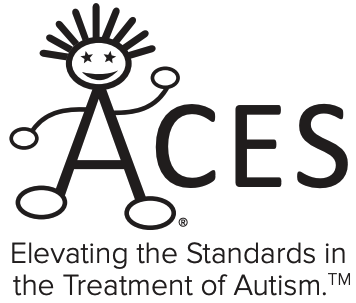August 1, 2020
Arizona Republic
Caitlin McGlade
People with disabilities who live in state-licensed homes and facilities have died of COVID-19 at more than twice the rate of those who live with family or own their own homes, according to state data.
The virus has killed 21 people with developmental disabilities living in state-licensed settings, bringing the death rate to about 6.5%.
Among nearly 5,000 residents, 320 have tested positive.
Those settings include group homes, which are by far the most common, or situations where a person lives alone but relies on caregivers to help with daily tasks. They also include Adult Development Homes, where families host residents in their houses, and intermediate care facilities, which are similar to nursing homes.
Experts say people living in these places may also get delayed treatment because staff might not notice their symptoms as early as family would. Or, experts say, this population might be more prone to severe cases because they tend to be older and have more medical issues than those who live with family.
Stephanie Silvera, an epidemiologist and professor of public health at Montclair State University in New Jersey, suggested that they might suffer tougher bouts of COVID-19 because living with other sick residents exposes them to larger viral loads or because they're cared for by numerous employees who could bring the virus to work.
This is all speculation, however, because the state releases such little data on the matter
Epidemiologists and advocates interviewed by The Republic said to better understand how the disease is affecting this vulnerable population they'd want to know the number of people tested, the ages of people who fell ill or died and what group homes or facilities had experienced outbreaks.
Families have repeatedly asked for more information during town hall meetings with the division, only to be told that sharing such data would jeopardize people's right to privacy on health matters, said Jon Meyers, executive director of the Arc of Arizona.
The Arc of Arizona is an advocacy group for people with disabilities. Meyers too has requested such information so his organization can better support people in areas hardest hit by COVID-19. The state said no, he said.
Less than 1% — or 308 — of the 39,000-plus state disability system members who live with family or own their home have tested positive, and 3% of them have died.
"What this means is if you live in a group home or an intermediate care facility or an adult development home, your risk is a lot higher," Meyers said. "To me that would indicate that something is not being done to keep the virus out of the residential settings."
More cases and a higher mortality rate
About 6% of people with developmental disabilities who live in state-licensed homes or facilities have tested positive for COVID-19. That is much higher than the overall population's infection rate in Arizona of 2%.
Some of the disparity can be explained by more testing of people in congregate living settings, as everyone in an intermediate care facility has been tested under a government mandate.
But those residents account for a small fraction of people who live in state-licensed facilities.
The Republic asked the Department of Economic Security for the number of residents who'd been tested. But the Division of Developmental Disabilities, which is part of that department and charged with overseeing services for roughly 44,000 people with developmental disabilities, does not track that number, said Brett Bezio, spokesperson for the department.
The Arizona Department of Health Services did not answer questions about testing statistics for that population.
Epidemiologists and advocates for people with disabilities, however, said it's likely that more testing among a subset of that population doesn't explain away the entire discrepancy.
"In this situation where you're not only finding a higher proportion of cases but a higher mortality rate, that leads me to think that may not be due to differences in testing rates alone," Silvera said
Staffing presents challenges
Congregate living settings such as group homes face unique challenges during a pandemic. Maintaining a distance isn't possible when staff have to help residents with daily tasks such as bathing. Also employees come and go.
Employees are the main source of resident outbreaks, said Gina Griffiths, director of programs at the Opportunity Tree. A handful of her group home residents have gotten COVID-19. She couldn't say how many employees have tested positive.
Her organization requires group home staff to take their temperatures twice during a shift, though she acknowledged the absence of a fever doesn't mean someone's in the clear. None of the residents who tested positive had fevers.
But taking temperatures is at least something. Anything to chip away at the "feeling of helplessness."
"The biggest thing that we have zero control over is what is our staff is doing when they're not at work," she said. "I want so much to say 'you all need to stay home and order your groceries online.'"
But she can't. Sure, she can try: She started a contest for hundreds of direct caregivers to document the ways they're social distancing. Most haven't participated.
The reality is the state only provides enough funding for these employees — who administer medication, bathe and feed people and manage aggressive behavior — to earn minimum wage.
Some must work other jobs to supplement their income. "We treat them like they're flipping burgers," Griffiths said.
And now, on top of all of that, these workers have to risk getting COVID-19 on the job. Fear among staff has risen with the growing cases in Arizona. Group home administrators industry-wide continue to lose employees, either from fear of going to work or because they've been exposed to the virus and can't work.
That puts residents at even greater risk because it can undermine one of the few tactics group home directors can use to try to reduce risk.
The Opportunity Tree tries to assign individual group home employees to just one home to try to prevent spread from site to site. But 12% of direct care workers were out last week because they were either sick or had been exposed to the virus. So some employees had to stretch among different homes.
When residents get sick they isolate them, either by moving them to a different house or by sending their uninfected roommates to a different one. Opportunity Tree is paying employees extra money to move in with COVID-19 positive residents — but that's not supported by state funding.
It's also setting up computers and wireless internet at all group homes to help keep residents engaged and for leadership to be able to check in via video chats to make sure staff are wearing masks as required.
That's another cost state funding won't cover.
Being able to test staff regularly would be a good way to prevent spread among residents, but group homes don't have money for that either.
Griffiths said Arizona's most recent state study on disability services showed that the system is underfunded by $250 million to $400 million.
"It created a situation where there was no other way for us to be caught other than flat- footed," said Taylor Buttrey, the Opportunity Tree's manager of cultural programming and community engagement.
'Continued community exposures'
Emails between Coconino County health officials show just how difficult it can be to contain virus spread in group homes.
The emails were obtained through a public records request for the Documenting COVID-19 project at the Brown Institute for Media Innovation.
Across 16 group homes run by the Hozhoni Foundation in Flagstaff, Coconino County health officials struggled to determine which group home residents had been exposed to COVID-19 in the aftermath of a death.
A May 18 email from the county's communicable disease investigator, Marette Gebhardt, to other health officials reported that all four residents at one group home had tested positive.
The health officials emailed over the next few days about mass testing.
"I believe we need to include staff in this testing as well as I think there are several who either have not received their results or who continue to work with positive clients and may not be using PPE appropriately etc," wrote Kim Musselman, director of special initiatives.
But later that day Gebhardt wrote that there would be "virtually no way to nail down all staff members and test them at exactly the right time."
She wrote that there were 100 caregivers, a lot of whom "live on or frequent the reservation," who got tested there or outside the county so there wasn't a good way to find their test results.
She determined through interviews and a search of a state database that employees with COVID-19 had worked at 12 of the 16 Hozhoni Foundation homes.
VIRTUALLY NO WAY TO PROTECT: against coronavirus outbreaks at disability group homes
"We just have to accept the fact that there will be ongoing transmission and continued community exposures and they need to switch their focus to taking proper precautions at work and preventing the spread at work," Gebhardt wrote.
She said she sent the group home leadership guidance on quarantine, mask efficacy and how to use PPE correctly.
Ultimately, the county was able to track down test results for 94 Hozhoni employees, 74 of which the county tested itself, Gebhardt said in an email to The Republic.
Gebhardt said testing staff at the right times was one of the biggest challenges. They were being exposed to COVID-19 both at work and outside of work — which made it difficult to determine the exact day of exposure. And officials needed to know that to determine the length of quarantine and the best day for testing.
They also weren't aware of who already had been tested at sites not sponsored by the county and received negative results, as only positive results are required to be reported to the county, Gebhardt said.
To add to the challenge, test results are reported to the county where a patient lives. So Coconino County health officials were not made aware of COVID-19 positive employees if they lived outside the county, Gebhardt said.
Through working with other counties and state officials, they were able to track down most of those results, though.
The county also made sure all residents were tested.
Most residents who tested positive were asymptomatic, Gebhardt said.
"The biggest challenge was the inherent nature of this disease in that once someone was exposed, time was required to determine if they became infected and would potentially infect others," Gebhart said. "Although Hozhoni implemented temperature checks, symptom questionnaires, and strict rules about not working while ill, it is still very difficult to contain the spread of COVID-19 once it is circulating within a group of people."
'I couldn't see him'
Despite the virus' spread in group homes, the pandemic has not devastated them to the extent that advocates had expected.
Many group homes have been able to secure adequate personal protective equipment and cleaning supplies and many agencies shuttered day programs to avoid large groups of people from gathering.
Yet some smaller group homes are struggling to find enough PPE and cleaning supplies, Meyers said. And without regular testing, containing the spread of the virus remains elusive.
Residents of nursing homes and intermediate care facilities all received testing under an executive order. The Arc of the United States is trying to get the Centers for Medicaid and Medicare Services to mandate testing in places like group homes.
Until then, the best administrators can do is require masks and extensive cleaning, restrict visitation and resident outings, take employee and resident temperatures and move residents into separate buildings when they show symptoms. But by then, everyone else in the house would likely have caught the virus.
Robert St. John's Glendale group home roommates were spared when he got sick. He tested positive for COVID-19 after a bout of vomiting, said his sister, Kat Crawford.
The 34-year-old was diagnosed in March, and his group home moved him out immediately. He spent about three months in an empty building otherwise used for day program services.
He stayed in a classroom on a roll-away bed with a DVD-player and a shower and washer and dryer down the hall. Staff would drop off meals at his door, but not enter.
He watched the movie Twister 30 times.
St. John continued to test positive until the end of June. Crawford said occasionally other sick residents joined him in the building.
"The most stressful part was that I couldn't see him," she said. "I couldn't go over and check on him. I couldn't pick him up and hang out."














